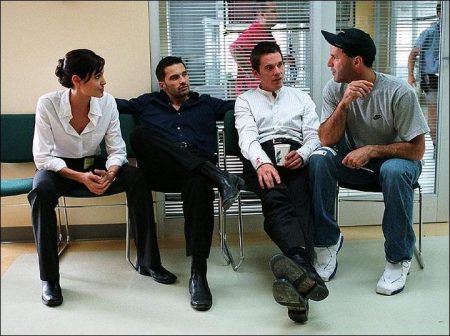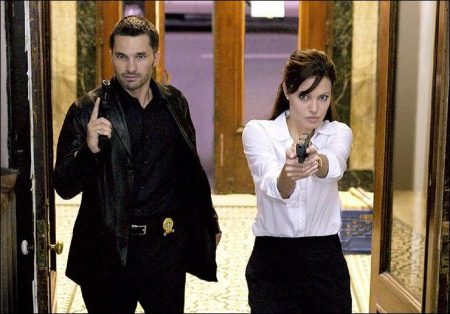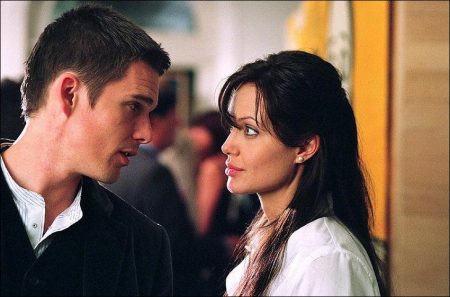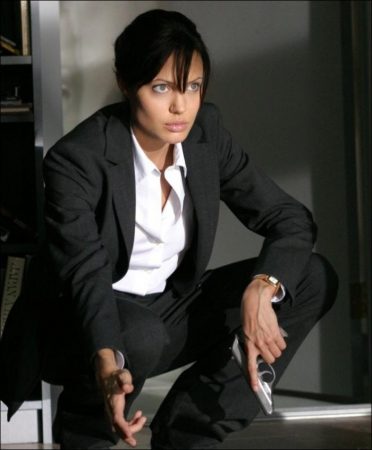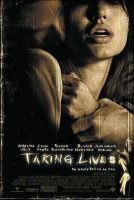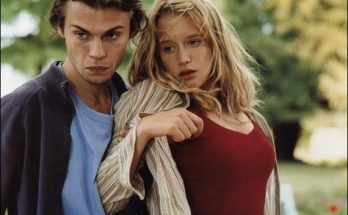Taglines: He would kill to be you.
Taking Lives movie storyline. A top FBI profiler, Special Agent Illeana Scott (Academy Award-winner Angelina Jolie) doesn’t rely on traditional crime-solving techniques to unravel the mysteries of a murderous mind. Her intuitive, unconventional approach often makes the crucial difference between catching a killer and sending a dead-end case to the cold file.
When Montreal detectives handling a local homicide investigation reluctantly ask for an outsider’s help to get inside the head of a cunning serial killer, Agent Scott joins the case. With meticulous insight, she theorizes that the chameleon-like killer is “life-jacking” assuming the lives and identities of his victims.
As the pressure mounts to catch the elusive murderer, Agent Scott’s unorthodox methods alienate her from a territorial police team that feels threatened by her uncanny abilities. Her seemingly cold demeanor belies an unparalleled passion for her work, and she’s at her best when she’s working alone.
But when an unexpected attraction sparks a complicated romantic entanglement, the consummate specialist begins to doubt her finely-honed instincts. Alone in an unfamiliar city with no one she can trust, Agent Scott suddenly finds herself on a twisted and terrifying journey, surrounded by suspects in a case that has become chillingly personal.
Taking Lives is a 2004 American psychological thriller film starring Angelina Jolie and Ethan Hawke and directed by D. J. Caruso. Loosely adapted from the novel of the same name, the film centers on an enigmatic serial killer who takes on the identities of his victims. The film was marketed with the tagline, “He would kill to be you.”
The original music score was composed by Philip Glass and the main title’s theme was composed by Austrian Walter Werzowa, best known for the Intel jingle and his work in the band Edelweiss. Taking Lives grossed $32,682,342 in the United States and $65,470,529 worldwide.
Filming Locations
In addition to the invaluable help the film crew received from the Surete, they enjoyed a general warm reception from Montreal and Quebec City , which provided the perfect settings for their story, which is set in Montreal. Working from an early script that placed the action in Vancouver, D.J. Caruso decided while location scouting to move the focus to the predominantly French-speaking cities in favor of their “European feel.”
As a bonus, this allowed the production to incorporate shots of the renowned Montreal International Jazz Festival, complete with fireworks, into a vital pursuit sequence, giving the action a more urgent, surreal tone. Caruso, who compares the festival atmosphere to Mardi Gras, recalls how the camera crew made the most of the opportunity, “running and gunning, with extras mixed into the crowd. It was fantastic, the energy of the real event was beyond anything we could have manufactured; you could almost point your camera in any direction, the scope and scale of it was overwhelming.”
Quebec’s blend of the familiar with the foreign, especially for American audiences, serves as an unsettling reminder, notes Canton, “that this story could be taking place anywhere in the world. It could be your hometown.”
The setting also amplifies Agent Scott’s isolation. “By placing the American FBI agent into a predominantly French-speaking city with a distinctive European look, it illustrates her separateness,” Caruso explains. “She’s an outsider and a loner here; excluded from the camaraderie of the local police department and the tight partnership of the lead detectives, living in a hotel, unsure of her way around and unable to carry a gun until the proper international permits are issued,” an element that helps in some way to explain the choices she makes later.
Finally, the beauty of these Canadian locales, captured by cinematographer Amir Mokri, provides stark contrast to the ugliness of the crimes being committed: a meandering bike path alongside a lush forest is marred by the discovery of a makeshift grave, an elegant art gallery reception is marred by gunfire and destruction.
About the Film
“I’m intrigued with the notion of identity – who we are and who we think we are,” says director D.J. Caruso, citing one of the principle themes in Taking Lives, a psychological thriller that pits the expertise of an FBI profiler against the equally expert but twisted mentality of a serial killer.
This is a killer who not only takes the lives of his victims but bizarrely assumes their identities, using their credit cards and living in their homes for weeks or months before moving on to the next target. “He’s life-jacking,” says Caruso, offering a term he coined while preparing for the project. “Not only does this guy, in his mind, become you, but he imagines he’s living your life better than you would potentially live it, and that’s part of his enjoyment.”
From the story’s opening moments, when a body is discovered near a Montreal construction site, it’s clear that this is not a standard murder case. Something about the vicious and ritualistic nature of the crime indicates to local police director Hugo Leclair that he may be dealing with a serial killer, and that prompts him to call on Special Agent Illeana Scott, an FBI profiler, for help. It’s not that he doesn’t trust his own detectives to solve the case; it’s just that tracking such monsters is Agent Scott’s specialty. And if her methods seem a bit peculiar to his staff, so what? What better way to catch an unconventional criminal?
While Taking Lives delivers all the visceral impact audiences expect from a first-class thriller, it also explores a number of deeper and often surprising elements of personality and motive, leading Caruso to muse that “it’s not so much a who-dunnit as a why-dunnit. The way the case must be solved is by figuring out the reasons for the killer’s behavior, finding his point of view, and from that, ultimately, discovering who he is.”
“We live in dangerous times and certainly this movie operates on that level, stirs that sense of prickly terror,” says producer Mark Canton, from a perspective spanning more than 20 years as a senior studio executive, filmmaker and fan. “But it also touches on ideas about childhood, alienation and rejection, themes that develop in a person’s life at a very early age and how childhood fantasies sometimes manifest themselves in powerful and destructive ways. As a parent, I find that particularly fascinating. It’s an intelligent story, a smart person’s thriller.”
“You’re never quite sure where the story or the characters are going,” adds producer Bernie Goldmann, like his colleagues a longtime fan of the artfully constructed thriller. “You’re not sure what their back-stories are or their motivations and why they choose to tell people certain things. It’s a lot like life.”
Screenwriter Jon Bokenkamp (Preston Tylk), who adapted the script from the Michael Pye novel, emphasizes strong characterizations as the story’s backbone. “What I loved about Michael’s book was the unique nature of the killer. It makes you wonder, what drives him? What is he hiding from? Thematically, it’s about feeling uncomfortable in your own skin.” It doesn’t hurt that Bokenkamp is fully in his element here. “I love thrillers,” he offers unabashedly. “A good thriller is like a math problem; the answers are there all along, you just have to work them out.”
As Special Agent Illeana Scott, Oscar-winner Angelina Jolie is first seen onscreen lying flat on her back in a freshly opened grave. From this macabre perspective, she then emerges with a number of specific and accurate details, not only about the grave’s former occupant but about the man who put him there: “The killer chose this site specifically, dug it in advance. The corners are neat, symmetrical, the proportions precise,” she observes, also deducing from these details the victim’s height and the likelihood that he was a regular cyclist on the nearby bike path.
Taking Lives (2004)
Directed by: D.J. Caruso
Starring: Angelina Jolie, Ethan Hawke, Kiefer Sutherland, Olivier Martinez, Gena Rowlands, Olivier Martinez, Tchéky Karyo, Justin Chatwin, Jean-Hugues Anglade
Screenplay by: David Ayer
Production Design by: Tom Southwell
Cinematography by: Amir Mokri
Film Editing by: Anne V. Coates
Costume Design by: Marie-Sylvie Deveau
Set Decoration by: Suzanne Cloutier, Anne Galéa, Amanda Moss Serino
Art Direction by: Serge Bureau
Music by: Philip Glass
MPAA Rating: R for strong violence including disturbing images, language, sexuality.
Distributed by: Warner Bros. Pictures
Release Date: March 19, 2004
Views: 80
